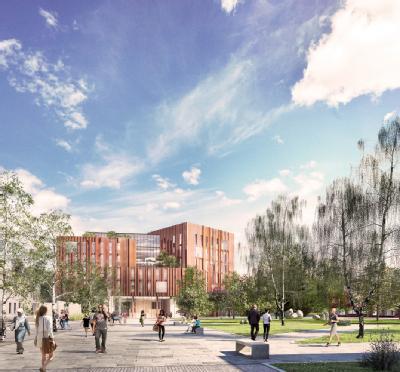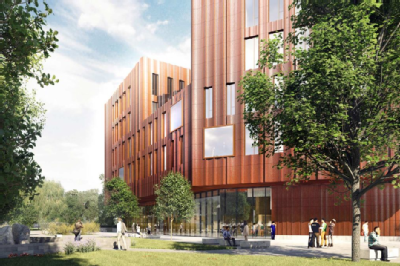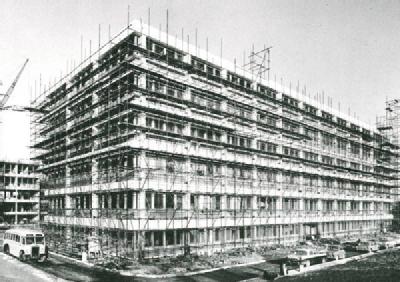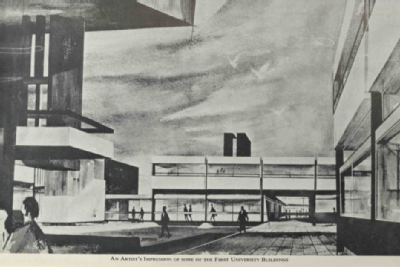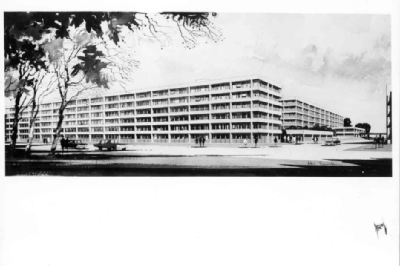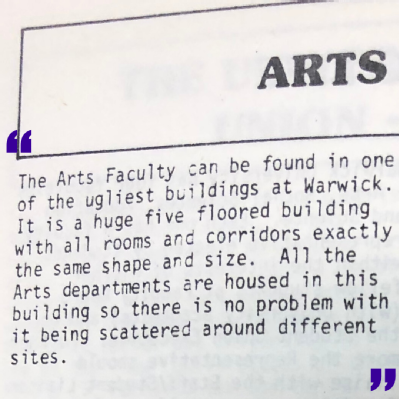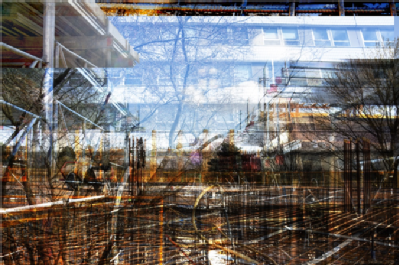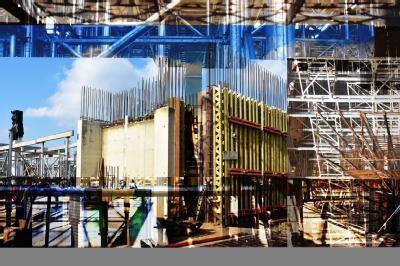Architecture at Warwick
The architecture of the campus has changed a lot over the past decades, and it continues to do so, as Warwick has invested massively in the development of the campus. Some may say this has sometimes tended to favour those doing non-arts subjects, such as the Manufacturing Group students or the those studying in the new Materials Engineering Centre. If one looked at the plans for development that Warwick put forward in 2005 for the following 15 years, they would be shocked to see that the plans seemed to leave out the arts completely, with virtually all funds going towards the redevelopment of the buildings belonging to STEM or administrative departments.
However, more recent plans for development have moved the spotlight to the arts, as the Faculty of Arts students are getting a brand-new building which will include mixed teaching and study spaces, a café and even an exhibition space, alongside the new Warwick Arts Centre building. The construction value of the building is set to £33 million, according to the company that was awarded the contract, Feilden Clegg Bradley Studios (Images on the right), which represents a substantial investment in the arts at Warwick, bringing together the four faculty departments that make up the Faculty of Arts. The project is meant to be completed by 2021, and it is estimated it will be able to accommodate up to 1000 students. Find out more here!
Considering that the campus is about to change so much in the next few years, a retrospective of what it used to look like in the past would provide a useful point of reference.
THE ESTABLISHMENT OF THE UNIVERSITY
In 1960s, the plans for a new university in the Coventry were materialized through the donation of a 400 acres site around the Gibbet Hill Road by the councils of Coventry City and Warwickshire City. The governmental approval for the university in 1961 was followed by the first small cohort of graduate students in 1964, mostly mathematicians and engineers.
The first buildings were completed by 1965, now known to house Biological Sciences. By 1970, the Library, Science and Arts Buildings, Benefactors and Rootes Residences were built. Senate House and the Arts Centre were completed in 1974, followed by the Students’ Union Building in 1975. The 1990s saw the expansion of the student accommodation facilities on campus, as Arthur Vick, Claycroft and Lakeside halls of residence were erected between 1993 and 2000. (Images on the right)
The man behind the architectural vision of the campus was Eugene Rosenberg, a Slovakian-born British modernist architect who was the mastermind behind other innovative architectural projects such as Gatwick Airport and the Manchester Magistrates Court. He was also an avid collector of contemporary and 20th century art. According to him:
“The bond between contemporary art and architecture is not easy to define, but I believe they are complementary – that architecture is enriched by art and that art has something to gain from its architectural setting.”
This bond between architecture and contemporary art permeates every aspect of the campus. From the way in which the clean geometry of the buildings flows into the clean shapes of the sculptures dotted around campus, to the way in which the paintings and drawings decorating the insides of the buildings fit perfectly with the sleek, crisp lines of the walls. Rosenberg’s training with French-Swiss architect and artist Le Corbusier can definitely be noticed in his architectural style, with the free façades, flat roof, horizontal windows and pilotis that have become part of Le Corbusier’s signature being visible on campus – most evidently in the Benefactors building.
Artists’ impressions (Image on the right) of the Humanities building in its early days give us an appropriate visual account of what it looked like during its early days. It does not seem to have changed much, with the only signs of age being its white horizontal tiles that have lost some of their whiteness. The modernist aesthetic of the campus has been kept throughout the years, and the new Faculty of Arts building does not seem to stray far from that, as the plans for the building are show a focus on strong geometric shapes, with one side of the building raised up on a glass wall, and a simple façade. The floor plans reveal four light-filled pavilions, with clusters put in place which separate teaching spaces from offices and study spaces.
Moreover, ceramics artist Matthew Raw has been commissioned to make a group of tiles for the group floor exterior of the building. Working in collaboration with the tile manufacturers NBK, Matthew will be creating a piece titled “Faith in the Miraculous”, which will draw on the post-war quality of Coventry, as well as highlighting the creative power of the Faculty of Arts students and professors. His visits on campus and interest in speaking to both students and staff within the Faculty of Arts at Warwick, and as part of the broader university community shows that his work is truly grounded in the experiences of those who represent the faculty.
An artistic response to the new Arts building by a History of Art student from the university further emphasises the strong continuation between tradition and innovation at Warwick. Madeleine Snowdon created a digital collage (Image on the right) which merges the old and the new, a true exploration of the psychology of space and architecture which entices the viewer.
The conclusion that can be drawn from this is that Warwick is definitely not stuck in time, as all departments are progressing and moving forward, much like the architectural landscape at Warwick and the University’s arts collection. The Faculty of Arts and its students occupy a special space on campus, and the funding that the university has set aside for them and their working and studying spaces is a positive message towards the humanities community in a time that it is much needed, amid further cuts to the arts. With the current circumstances in mind as the COVID-19 crisis unfolds, perhaps this is the perfect time to stop and think of our past, whilst also keeping our future in mind, as students, teachers, members of the community that is Warwick, which will be part of our lives forever, if not literally, then always in spirit.
BIBLIOGRAPHY
Campus Developments, https://warwick.ac.uk/about/community/projects/campusdevelopments/
Feilden Clegg Bradley Studios, https://fcbstudios.com/work/view/warwick-university-faculty-of-arts
History of the University, https://warwick.ac.uk/about/history/
Imagining a University: Fifty Years of The University of Warwick Art Collection (Cornerhouse Publications, 2015)
New Arts Building, https://warwick.ac.uk/fac/arts/aboutus/artsfacultyfacilities/newartsbuilding/faq/
Sculpture Trail, https://warwick.ac.uk/services/art/resources/sculpture/
University of Warwick Sculpture Trail, https://warwick.ac.uk/services/art/resources/sculpture/sculpture_map_a4.pdf
Warwick 20:20 Project, https://www.warwickartscentre.co.uk/2020/
Warwick Art Collection, https://warwick.ac.uk/services/art/
Warwick Modern Records Centre, https://warwick.ac.uk/services/library/mrc/

